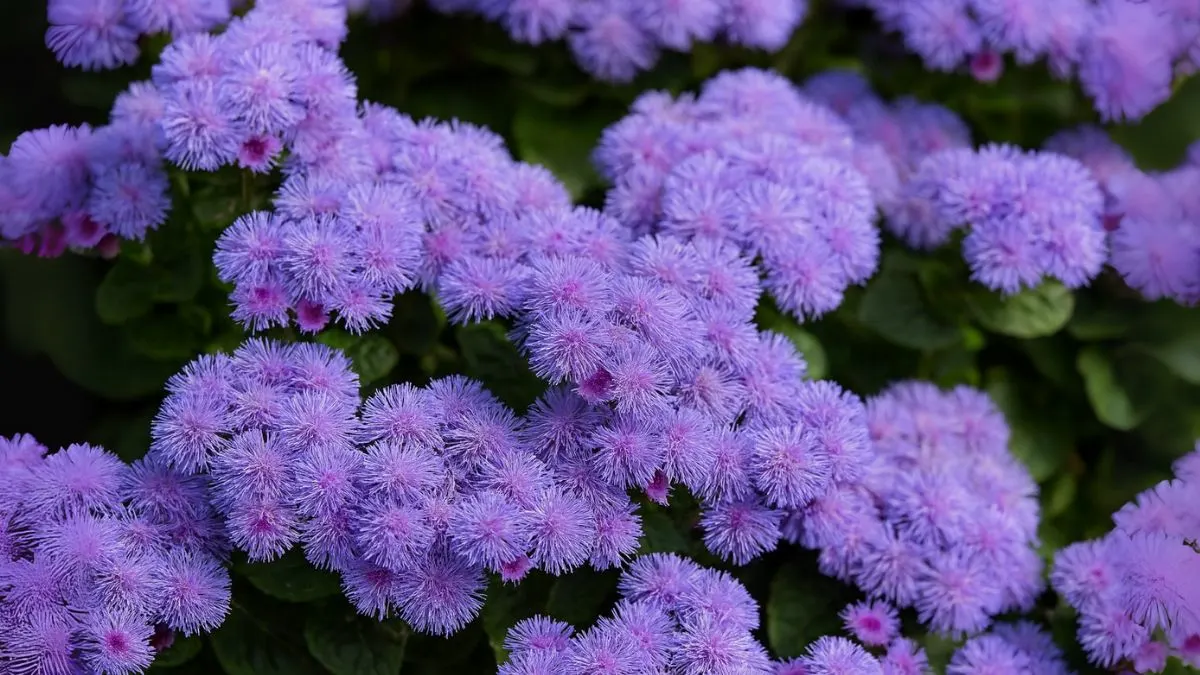If you’ve ever wanted a low-maintenance flower that adds a burst of blue and purple to your garden beds, Ageratum is the answer. Also called “floss flower” for its soft, cushiony blooms, this plant thrives in most climates and makes a bold statement in containers, borders, or as bedding. The best part? It’s surprisingly beginner-friendly.
In this step-by-step guide, I’ll share how to grow Ageratum from seed, care for it through the season, and enjoy its long-lasting flowers. I’ll also weave in my own tips that helped me succeed the first time I grew these beauties.
Step 1: Starting Seeds Indoors

The best way to kickstart your Ageratum journey is to start seeds indoors 8-10 weeks before the last frost. These seeds are tiny, so handle them gently.
- Press seeds gently into the soil mix and don’t cover them. Ageratum needs light to germinate, so pressing them down lightly is enough.
- Choose a seed-starting mix that’s moist but not soggy.
- Use trays or pots; in my experience, seed trays work best since you can transplant them later without much stress.
This method gives your plants a strong start before they move outdoors.
Step 2: Choosing the Right Soil
Healthy soil is the secret to lush blooms. Ageratum can be started in seed trays and transplanted or direct sown in late spring once frost danger is gone.
- Always sow indoors in spring onto moist, peat-free seed compost.
- When planting outside, go for fertile, well-drained soil.
- A sunny location is crucial — at least 6 hours of sunlight daily will help the flowers flourish.
Also Read: How to Grow Raspberries Bushes in Pots and Enjoy Endless Harvests
Step 3: Direct Sowing in Spring
For gardeners who prefer the simplest route, Direct Sowing is the easiest method. Wait until after the last frost and shake the seeds from the pod over well-prepared soil in a sunny flower bed.
Lightly press them into the soil — don’t bury them — and keep the soil consistently moist but not waterlogged until seedlings appear.
Step 4: Caring for Seedlings
Once your seedlings sprout, it’s important to thin them out for space. Seedlings are very carefully separated in late April or early May depending on your climate.
Thin them to about 6–8 inches apart. This allows good airflow and prevents overcrowding. When I first grew Ageratum, I skipped thinning — and ended up with leggy, weak plants. After correcting it, the flowers became bushier and healthier.
Step 5: Transplanting Outdoors
When seedlings are about 2–3 inches tall and the soil is warm, you can transplant them outside.
- Start planting Ageratum seeds indoors 8 to 10 weeks before the last expected frost in your area, then move them outdoors.
- Space them properly to avoid fungal issues.
- Choose garden spots that have good drainage — these plants don’t like “wet feet.”
Also Read: The Complete Guide to Growing Hibiscus Trees
Step 6: Ongoing Care and Maintenance
Growing Ageratum doesn’t demand much, but consistency is key.
- Water: Keep soil evenly moist, especially during hot spells. Avoid overwatering.
- Fertilizer: A balanced, all-purpose fertilizer every 4–6 weeks keeps flowers blooming.
- Sunlight: Full sun is best, though they tolerate partial shade.
Why Gardeners Love Ageratum
- The vibrant blue and purple flowers are rare in the garden world.
- It’s compact, so it fits in containers, edging, and garden beds.
- Pollinators like bees and butterflies love it.
- The blooms last long, making them great for cut flowers.
When I grew my first batch, I placed some in containers by my patio and others along a border. The effect was stunning — a sea of soft blue against my green lawn.
Quick Growing Summary of Ageratum
Step |
Key Action |
Notes |
Seed Starting |
Start seeds indoors 8–10 weeks before last frost |
Press lightly, don’t cover with soil |
Soil Prep |
Use fertile, well-drained soil |
Peat-free compost preferred |
Direct Sowing |
Direct sow in late spring after frost danger |
Keep soil moist, not waterlogged |
Thinning |
Thin seedlings 6–8 inches apart |
Promotes airflow and bushier growth |
Sunlight |
Needs 6–8 hours of full sun |
Partial shade tolerated |
Maintenance |
Moderate watering and light feeding |
Fertilize every 4–6 weeks |
Also Read: Flowers You Shouldn’t Deadhead
Growing Ageratum is perfect for beginners who want maximum reward with minimal effort. Whether you start seeds indoors 8–10 weeks before the last frost or go for Direct Sowing, this flower thrives with fertile, well-drained soil and plenty of sunshine.
If you’ve been hesitant about trying annuals, let this be your sign. Grab a seed packet, prepare a sunny spot, and enjoy the charm of these fluffy, vibrant blooms in your garden.
🌸 Your turn: Will you try growing Ageratum in containers, borders, or both?






